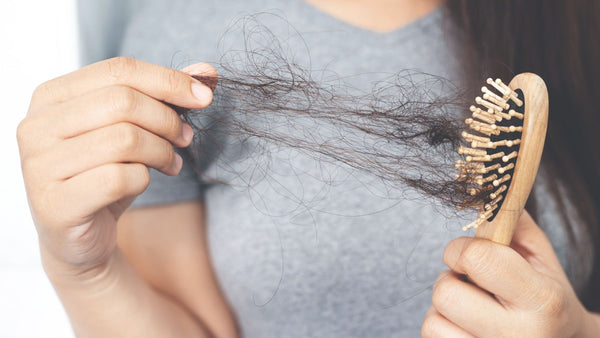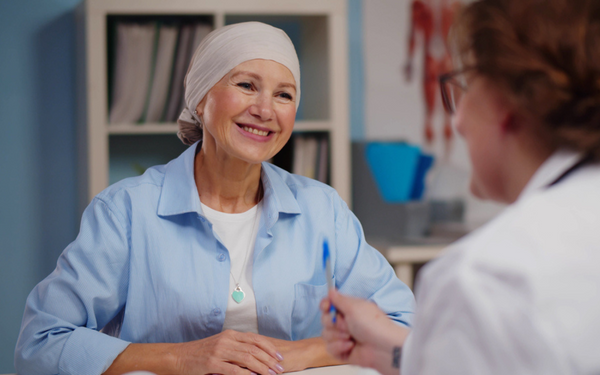Hope Beyond Hair Loss: How Therapists Can Support Clients With Alopecia

Alopecia Areata is a condition that affects thousands of people around the world and can be both physically and emotionally challenging. It is classified as an autoimmune disorder, where the body’s immune system mistakenly attacks the hair follicles, resulting in hair loss. This condition does not discriminate and can affect people of any age, gender, or background. It can begin in childhood, adolescence, or adulthood, and while it is more common before the age of 30, it can occur at any stage of life. The hair loss usually occurs in small, round patches on the scalp, but in some cases, it can progress to complete scalp hair loss (known as Alopecia Totalis) or total body hair loss (Alopecia Universalis).
Symptoms often begin with sudden, patchy hair loss on the scalp. The affected areas may be smooth and skin-coloured, with no visible signs of inflammation, making it particularly surprising for individuals when they notice a bald patch appear seemingly overnight. In some cases, the hair may regrow on its own, while in others, it may fall out again or not return at all. The condition can be unpredictable, and its cyclical nature often adds to the emotional strain for those living with it.
The exact cause of Alopecia Areata is still being researched, but it is understood to be primarily autoimmune in nature. Genetics plays a role, especially in those with a family history of autoimmune diseases such as thyroid conditions, vitiligo, or type 1 diabetes. Studies have shown that Alopecia Areata is indeed a genetic condition, with certain immune-related genes being more common in those affected. Environmental triggers such as stress, viral infections, hormonal fluctuations, and even trauma to the skin or scalp can also initiate or exacerbate the condition. Oxidative stress and chronic inflammation are thought to further drive the autoimmune response, leading to continued hair follicle disruption.
What does Alopecia Areata look like? Most commonly, it appears as round or oval patches of hair loss on the scalp. The skin in these areas is usually smooth, and there is no scarring. In more severe cases, the hair loss can spread to other parts of the body, including eyebrows, eyelashes, and limbs. Sometimes, there may be changes in the fingernails, such as pitting or ridges, which can serve as additional indicators of the autoimmune activity within the body.
Living with Alopecia Areata can be deeply emotional. The condition often affects a person’s self-esteem, confidence, and social interactions. Some individuals feel isolated or anxious about their appearance, especially when the hair loss is visible and persistent. For some, it leads to a heightened awareness of their looks and increased concern about how others perceive them. As professionals working in skin and hair health, understanding the psychological impact of this condition is just as important as addressing the physical symptoms.
Skin therapists have a unique and supportive role in the management of Alopecia Areata. While the core treatment of this autoimmune disorder often lies with medical professionals, skin therapists can assist in non-invasive and regenerative treatments that complement medical care and help create an optimal environment for hair regrowth. Through microneedling, the scalp is stimulated to increase blood flow, awaken dormant follicles, and allow better penetration of topical serums. Microneedling also triggers a wound healing response, encouraging the release of growth factors that can help with hair regeneration.
LED light therapy, especially in the red and near-infrared spectrum, is another excellent tool. It works by stimulating the mitochondria in the hair follicle cells, boosting ATP production, reducing inflammation, and enhancing tissue repair. When used consistently, LED therapy can help calm the autoimmune attack and encourage hair growth by supporting cellular health.
The application of growth serums, stem cell-derived factors, and exosomes after microneedling or LED treatments can significantly enhance outcomes. These advanced ingredients carry regenerative signals that encourage the repair and regeneration of the follicle environment. Exosomes, in particular, are gaining attention for their ability to modulate immune responses and stimulate hair follicle activity at the cellular level.
Clients must also take an active role in their treatment journey. At home, they should use gentle, anti-inflammatory scalp care products that do not strip the natural barrier. A nutrient-rich, anti-inflammatory diet can support overall immune balance, while stress management techniques like mindfulness, meditation, or acupuncture can help minimise flare-ups. Daily use of growth serums and a consistent routine of care will enhance the results achieved in-clinic.
In addition to topical care and professional treatments, certain supplements can be beneficial in supporting the hair growth cycle and immune balance. These may include vitamin D, zinc, biotin, iron (if deficient), and omega-3 fatty acids. Adaptogenic herbs such as ashwagandha may also help to manage cortisol levels and reduce the impact of stress on the body. It is always recommended that clients consult with a healthcare professional before starting any new supplements, particularly if they are on medication or managing other health conditions.
Treatment frequency will vary depending on the severity and progression of the condition, but a general guideline includes LED therapy three to four times per week and microneedling sessions every two to three weeks initially. As progress is observed, the treatment intervals can be adapted. Skin therapists should regularly assess the scalp’s condition and adapt the plan to the client’s needs.
Ultimately, supporting a client with Alopecia Areata is about more than hair regrowth. It is about restoring hope, confidence, and control. By working collaboratively with medical professionals and incorporating evidence-based aesthetic treatments, skin therapists, nurses, and dermal clinicians can play a powerful role in a client’s physical and emotional healing process.
In summary, Alopecia Areata is an autoimmune condition with complex causes and varying symptoms, but with a compassionate and strategic approach, it can be managed effectively. Therapists can make a meaningful impact through consistent, supportive treatments such as microneedling, LED therapy, and the use of regenerative serums. When paired with proper at-home care and nutritional support, these therapies can improve scalp health, encourage regrowth, and offer clients a renewed sense of confidence in their journey toward recovery. It is about restoring hope, confidence, and control. By working collaboratively with medical professionals and incorporating evidence-based aesthetic treatments, skin therapists, nurses, and dermal clinicians can play a powerful role in a client’s physical and emotional healing process.




